
|
|
SUBSIM: The Web's #1 resource for all submarine & naval simulations since 1997
 |
SUBSIM: The Web's #1 resource for all submarine & naval simulations since 1997 |
 08-12-11, 07:20 AM
08-12-11, 07:20 AM
|
#1 |
|
Navy Seal
 Join Date: Sep 2009
Location: Valhalla
Posts: 5,295
Downloads: 141
Uploads: 17
|
I thought I'd give this a bit of exposure, since I have a bit of a passion for all things tanks. And I know danasan will appreciate it.
This post was inspired by a few other websites which have done something similar. Credits will be given at end of post. I'll go into a bit of history of tanks first: Apart from Leonardo da Vinci's drawing of a round, tank like armoured wagon, the first description of a tank-like vehicle and its usefulness in trench warfare is found in an H.G. Wells short story, "The Land Ironclads", in the Strand Magazine, December 1903. Some eight years later, in 1911, the first two practical tank designs were developed independently by Austrian engineering officer Günther Burstyn and Australian civil engineer Lancelot de Mole. Burstyn designed his tank with a sprung suspension and armed with a single gun located in a revolving turret - a design quite similar to modern tanks - but he was unable to design a track that could carry the weight of the vehicle and propel it at reasonable speed. He submitted his idea of a "land torpedo boat" to the Military Technical Committee in Vienna but the idea was rejected as lacking sufficient merit; he did, however manage to patent his invention (Zl. 252 815 DRP).[7][8] Around the same time de Mole designed "a tracked armoured vehicle" and sent his sketches to the British War Office. His idea was rejected, but after the Great War the British royal commission awarded de Mole £965 for expenses, and in 1920 he was appointed C.B.E.[8][9] Landship development, originally conducted by the British Navy under the auspices of the Landships Committee was sponsored by the First Lord of the Admiralty, Winston Churchill and proceeded through a number of prototypes, importantly among them the Little Willie, designed by William Ashbee Tritton and Walter Gordon Wilson as the first-ever completed tracked tank prototype vehicle, culminating in the Mark I tank prototype, named Mother.[10] The "tank" moniker was the consequence of a security strategy during development. Staff was told that the devices were to be water carriers for use in the Middle East. The workers gave the machine the logical nickname "tank" and the name stuck. The first tank to engage in battle was designated D1, a British Mark I, during the Battle of Flers-Courcellette on 15 September 1916. In contrast to World War II, Germany fielded very few tanks during World War I, with only 15 of the A7V type being produced in Germany during the war.[12] The first tank versus tank action took place on 24 April 1918 at Villers-Bretonneux, France, when three British Mark IVs met one German A7V. Mechanical problems, poor mobility and piecemeal tactical deployment limited the military significance of the tank in World War I and the tank did not fulfil its promise of rendering trench warfare obsolete. Nonetheless, it was clear to military thinkers on both sides that tanks would play a significant role in future conflicts. In the interwar period tanks underwent further mechanical development and, in terms of tactics, J.F.C. Fuller's doctrine of spearhead attacks with massed tank formations was the basis for work by Heinz Guderian in Germany, Percy Hobart in Britain, Adna R. Chaffee, Jr. in the U.S., Charles de Gaulle in France, and Mikhail Tukhachevsky in the USSR. All came to similar conclusions, but in the Second World War only Germany would initially put the theory into practice on a large scale, and it was their superior tactics and French blunders, not superior weapons, that made blitzkrieg so successful in May 1940.[13] For information regarding tank development in this period, see tank development between the wars. Germany, Italy and the Soviet Union all experimented heavily with tank warfare during their clandestine and “volunteer” involvement in the Spanish Civil War, which saw some of the earliest examples of successful mechanised combined arms—such as when Republican troops, equipped with Soviet-supplied medium tanks and supported by aircraft, eventually routed Italian troops fighting for the Nationalists in the seven-day Battle of Guadalajara in 1937. World War II was the first conflict where armoured vehicles were critical to success on the battlefield and in this period the tank developed rapidly as a weapon system. During the invasion of Poland, the Panzer II and the captured Czechoslovakian Panzer 38(t) light tanks predominated. The Somua S35 and Char B1 in the French Army and the Panzer III and Panzer IV medium tanks appeared in numbers during the Battle of France, while the North African Campaign brought the British Crusader and Matilda into combat with the panzers. In Operation Barbarossa, the Wehrmacht encountered the Soviet T-34, which set the pattern for tank design for the rest of the century. By the time of the Invasion of Normandy, the Germans were fielding heavier Panther and Tiger tanks against the Allied M4 Medium (named the Sherman by the British). By the final stages of the war, an arms race in heavy armour produced tanks like the Tiger II and Iosif Stalin, as well as aborted super-heavy tank projects like the Maus, Tortoise, and T28. But it was development of medium tanks that would lead to the main battle tank of the Cold War. During World War II, the tactics and strategy of deploying tank forces underwent a revolution. Heinz Guderian, father of the German panzer forces, said "Where tanks are, the front is", and this concept became a reality in World War II. Following the Invasion of Poland where tanks performed in a more traditional role in close cooperation with infantry units, in the Battle of France deep independent armoured strategic penetrations were executed by the Germans, a tactic later called blitzkrieg or 'lightning war'. Early war German tanks sacrificed firepower and protection for mobility and reliability. Blitzkrieg made use of innovative combined arms tactics and radios in all of the tanks to provide command and control which made them more effective tank for tank than their Allied opponents, despite the Allied machines being more than a match for the panzers one-on-one. The French Army, with tanks equal or superior to the German tanks in both quality and quantity, employed a linear defensive strategy to which the armoured cavalry units were made subservient. The French also had poor command and control systems, lacking radios in many of their tanks and headquarters. In accordance with blitzkrieg tactics, German tanks bypassed enemy strongpoints and could radio for close air support to destroy them, or leave them to the infantry. A related development, mechanised infantry, allowed some of the troops to keep up with the tanks and create highly mobile combined arms forces. The word tank was first applied to the British "landships" in 1915, before they entered service, to keep their nature secret. There are at least three possible explanations of the precise origin of the term:
We start with a French tank, The FT-17, known as the first "modern tank," was designed by French car manufacturer Louis Renault during World War I. On average, it could move at the swift speed of 4-5 miles per hour! A young Captain Dwight D. Eisenhower trained with such tanks (without the machine guns) at Camp Colt on the Gettysburg Battlefield.  Next, we have a cutaway of a M4 Sherman Tank:  The M4 Sherman, formally Medium Tank, M4, was the primary tank used by the United States during World War II. Thousands were also distributed to the Allies, including the British Commonwealth and Soviet armies, via lend-lease. In the United Kingdom, the M4 was named after Union General William Tecumseh Sherman, following the British practice of naming their American-built tanks after famous American Civil War generals. Subsequently the British name found its way into common use in the U.S. The Sherman evolved from the Grant and Lee medium tanks, which had an unusual side-sponson mounted 75 mm gun. It retained much of the previous mechanical design, but added the first American main 75 mm gun mounted on a fully traversing turret, with a gyrostabilizer enabling the crew to fire with reasonable accuracy while the tank was on the move.[4] The designers stressed mechanical reliability, ease of production and maintenance, durability, standardization of parts and ammunition in a limited number of variants, and moderate size and weight. These factors made the Sherman superior in some regards, to the earlier German light and medium tanks that had swept across Europe in the blitzkrieg campaigns of 1939-41, and which still made up the majority of the German armor—albeit usually in up-gunned and up-armored variants—forces in the later stages of the war. The Sherman ended up being produced in large numbers and formed the backbone of most Allied offensives, starting in late 1942. The original Shermans were able to defeat the relatively small German tanks such as the Panzer III and IV they faced when first deployed in North Africa. Later, they found themselves more evenly matched against the newer up-gunned and up- armored Pz.Kpfw. IV medium tanks. Many models were outmatched by the 45 ton Panther tank and wholly inadequate against the armor and range of the 56 ton Tiger I and later 72 ton Tiger II heavy tanks, suffering high casualties against their heavier armor and more powerful 88 mm cannons. Mobility, mechanical reliability and sheer numbers, supported by growing superiority in supporting fighter-bombers and artillery, offset these disadvantages. Later versions of the Sherman introduced 76 mm guns, giving them better armor penetration than the original 75 mm gun, though still insufficient at range against late war German heavy tanks.  Technical Features of M4 Sherman Length: 5.84m Width: 2.62 m Height: 2.74 m Weight: 30.3 tons Engine: Patt & Whitney air-cooled, fuel gas. Proporciom Power / weight 14 hp / ton Veloccidad: 38.5 kph Range: 193 km Armament: 75 mm gun M3 L/40 Browning .30 cal machine gun to point the canyon Browning .30 cal antiaircraft gun, sometimes a .50 cal. Types of ammunition: Crew: 5 Armor: 62 mm Next up we have the Panzer IV The Panzerkampfwagen IV (PzKpfw IV), commonly known as the Panzer IV was a tank developed by Nazi Germany and used extensively in World War II. Car was originally designed as a means to support the infantry, working together with the anti-tank Panzer III. Later, they improved their armor and weapons and assumed the role of active combat tank. The Panzer IV was the most common German tank of World War II, and was used as the basis for other combat vehicles, such as mobile tank destroyer and antiaircraft artillery. After the war was built approximately 9,000 Panzer IV. 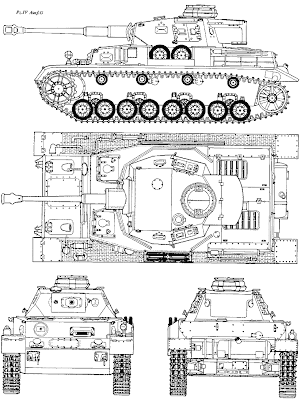 Technical Features Nationality: Germany Crew: 5 Length: 5.89 m Width: 2.88 m Height: 2.68 m Armor: 80 m Speed: 40km / h Range: 300km Weight: 23Tn Weapons Main Armament: 75 mm Cannon KwK 40 L/48 Secondary Armament: 2 x 7.92 mm MG34 Next up we have a WW1 Tank, the A7V:  The A7V was a tank introduced by Germany in 1918, near the end of World War I. One hundred vehicles were ordered during the spring of 1918, but only 21 were delivered. It was nicknamed "The Moving Fortress" by the British because of the shape of the hull. They saw action from March to October of that year, and were the only tanks produced by Germany in World War I to see operational use The tank's name was derived from that of its parent organization, Allgemeines Kriegsdepartement, 7. Abteilung, Verkehrswesen. In German the tank was called Sturmpanzer-Kraftwagen (roughly "assault armoured motor vehicle"). The A7V was 7.34 metres (24.1 ft) long, 3 metres (9.8 ft) wide, and the maximum height was 3.3 metres (11 ft). The tank had 20 mm of steel plate at the sides and 30 mm at the front; however the steel was not hardened armour plate, which reduced its effectiveness. It was thick enough to stop machine gun and rifle fire, but not larger calibres. This offered protection comparable to the thinner armour of other tanks of the period, which used hardened steel. The crew normally consisted of up to sixteen soldiers and two officers[clarification needed]: commander, driver, mechanic, mechanic/signaller, twelve infantrymen (six machine gunners, six loaders), and two artillerymen (main gunner and loader). The A7V was armed with six 7.92 mm MG08 machine guns and a 5.7 cm Cockerill-Nordenfelt fortification gun mounted at the front. Between forty and sixty cartridge-belts, each of 250 rounds, were carried as well as 180 shells for the main gun, split 90:54:36 between canister, antitank, and explosive. These were the official figures, up to 300 rounds for the main gun were actually stowed. The "female" variant had two more machine guns in place of the main gun. It is not entirely clear how many started this way or were converted. Some sources say only chassis number 501 saw combat as a female. Next we have the T-34 and the T-34-85:   As you can see, the T-34 does not have ammo boxes in the Turret. The T-34 was a Soviet medium tank produced from 1940 to 1958. Although its armour and armament were surpassed by later tanks of the era, it has been often credited as the most effective, efficient and influential design of World War II.[4] First produced at the KhPZ factory in Kharkov (Kharkiv, Ukraine), it was the mainstay of Soviet armoured forces throughout World War II, and widely exported afterwards. It was the most-produced tank of the war, and the second most-produced tank of all time, after its successor, the T-54/55 series.[5] In 1996, T-34 variants were still in service in at least 27 countries. The T-34 was developed from the BT series of fast tanks and was intended to replace both the BT-5 and BT-7 tanks and the T-26 infantry tank in service. At its introduction, it was the tank with the best balanced attributes of firepower, mobility, protection and ruggedness, although initially its battlefield effectiveness suffered from the unsatisfactory ergonomic layout of its crew compartment, scarcity of radios, and poor tactical employment. The two-man turret-crew arrangement required the commander to aim and fire the gun, an arrangement common to most Soviet tanks of the day; this proved to be inferior to three-man (commander, gunner, and loader) turret crews of German Panzer III and Panzer IV tanks. The design and construction of the tank were continuously refined during the war to enhance effectiveness and decrease costs, allowing steadily greater numbers of T-34s to be fielded. In early 1944, the improved T-34-85 was introduced, with a more powerful 85 mm gun and a three-man turret design. By the war's end in 1945, the versatile and cost-effective T-34 had replaced many light and heavy tanks in service, and accounted for the majority of Soviet tank production. Its evolutionary development led directly to the T-54/55 series of tanks, built until 1981 and still operational as of 2010 and which itself led to the T-62, T-72 and T-90 tanks which, along with several Chinese tanks based on the T-55, form the backbone of many of the world's armies even today. The T-34 was among the most important weapons systems in the Red Army in World War II. At the time it was first fielded in 1940, commentators considered one of the finest tank designs in the world. By mid-war, the T-34 no longer technically outclassed its opponents, but it remained effective in combat. As the T-43 was cancelled, the Soviet command made the difficult decision to retool the factories to produce a new model of T-34 with a turret ring enlarged from 1,425 mm (56 in) to 1,600 mm (63 in), allowing a larger turret to be fitted. The T-43's turret design was hurriedly adapted by V. Kerichev at the Krasnoye Sormovo Factory to fit the T-34. The resulting new T-34-85 tank had a much better gun and finally, a three-man turret with radio (which had previously been in the hull). Now the commander needed only to command the tank, leaving the operation of the gun to the gunner and the loader. Another very significant piece of equipment was the Mk.4 observation periscope copied from the British and Polish pre-war design, permitting the commander an all-around field of view, which was mounted on the turret roof.   Rear view of a T-34-85. In the centre is a circular transmission access hatch, flanked by exhaust pipes, MDSh smoke canisters on the hull rear, and extra fuel tanks on the hull sides. Overall production slowed down somewhat while the new tank started its production run. Although a T-34-85 was still not a match for a Panther, the improved firepower made it much more effective than before. The decision to improve the existing design instead of tooling up for a new one allowed the Soviets to manufacture tanks in such numbers that the difference in capabilities could be considered insignificant. In May 1944, the Wehrmacht had only 304 Panthers operating on the Eastern Front, while the Soviets had increased T-34-85 production to 1,200 tanks per month. Next we have the IS-2 Tank:    IS-3 with T-10 Turret: ammo not all round but only to the right and rear:  The Iosif Vissarionovich tank (or IS tank, also known as the Joseph Stalin tank), was a heavy tank developed by the Soviet Union during World War II and first used in the Kursk area in September 1943. The tanks in the series are also sometimes called JS or ***1048;***1057; tanks. The heavy tank was designed with thick armour to counter the German 88 mm guns, and carried a main gun that was capable of defeating the German Tiger and Panther tanks. It was mainly a breakthrough tank, firing a heavy high-explosive shell that was useful against entrenchments and bunkers. The IS-2 was put into service in April 1944, and was used as a spearhead in the Battle of Berlin by the Red Army in the final stage of the war. The IS-122 prototype replaced the IS-85, and began mass production as the IS-2. The 85 mm guns could be reserved for the new T-34-85 medium tank, and some of the IS-1s built were rearmed before leaving the factory, and issued as IS-2s. The main production model was the IS-2, with the powerful A-19. It was slightly lighter and faster than the heaviest KV model 1942 tank, with thicker front armour and a much-improved turret design. The tank could carry thicker armour than the KV series, while remaining lighter, due to the better layout of the armour envelope. The KV's armour was less well-shaped and featured heavy armour even on the rear, while the IS series concentrated its armour at the front. The IS-2 weighed about the same as a German Panther and was lighter than the German heavy Tiger tank series. It was slightly lower than both. While the design was good for its time, Western observers tended to criticize Soviet tanks for their lack of finish and crude construction. The Soviets responded that it was warranted considering the need for wartime expediency and the typically short battlefield life of their tanks. Early IS-2s can be identified by the 'stepped' front hull casting with its small, opening driver's visor. The early tanks lacked gun tube travel locks or antiaircraft machine guns, and had narrow mantlets.  IS-2. Next we have the Ferdinand, later renamed the Elefant:  notes: rear - ammo, above - crew, bottom (from left to right) - electric engine, fuel tank, engine. notes: rear - ammo, above - crew, bottom (from left to right) - electric engine, fuel tank, engine.Another schematic of Ferdinand but it's huge to post here: http://armor.kiev.ua/wiki/images/7/7f/Ferd_3.png The Elefant (German "elephant") was a "schwerer Panzerjäger" (heavy tank destroyer) of the German Wehrmacht used in small numbers in World War II. It was a built in 1943 under the name Ferdinand, after its designer Ferdinand Porsche. In 1944, after modification of the existing vehicles, they were renamed Elefant. The official German designation was Panzerjäger Tiger (P) and the ordnance inventory designation was Sd. Kfz. 184. 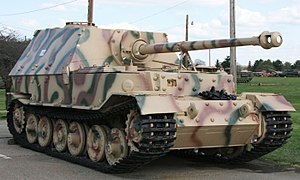 Next we have the Panther: Images are too big so links as follows: Link 1 Link 2 And the Jagdpanther:  The Jagdpanther (German: "hunting panther") was a tank destroyer built by Nazi Germany during World War II based on the chassis of the Panther tank. It entered service late in the war (1944) and saw service on the Eastern and Western fronts. Many military historians consider the Jagdpanther to be one of the best tank destroyers of the war due to the combination of the very powerful 8.8 cm KwK 43 cannon and the characteristically excellent armor and suspension of the Panther chassis. Next we have the KV-1S:  The KV-1 S was designed by N. F. Shashmurin.2 Armor was reduced to make tank faster as a common complaint from the front was that the KV-1 wasn't manoueverable.2 The armor was made thinner and the turret made smaller.1 A vision cupola was added to turret.2 Improvements Transmission, cooling, and lubrication systems were improved.1,2 The KV-1-S had a new gearbox and main clutch installed.1 Production KV-1 S: 1,233, 1,3701 Production: Autumn 1942 - 19432, August 1942 - late 19431 1940: 3342 1941: 1,2322 1942: 1302, 7801 1943: 4521,2 Usage Kursk The 53rd Guards and 57th Army Heavy Tank Brigades were equipped with KV-1-Ss at Kursk and took part in the heavy fighting from July 12 - 14, 1943.1 Berlin It is not known for sure but there were reports of KV-1-Ss taking part in Berlin during the operations to take the city in April - May 1945.1  KV-1S |

|

|
 08-12-11, 07:24 AM
08-12-11, 07:24 AM
|
#2 |
|
Navy Seal
 Join Date: Sep 2009
Location: Valhalla
Posts: 5,295
Downloads: 141
Uploads: 17
|
Next we have the M26 Pershing:
 The Heavy Tank M26 Pershing was an American heavy tank briefly used in World War II and in the Korean War. It was named after General John Pershing, who led the American Expeditionary Force in Europe in World War I. Development of the M26 during World War II was prolonged by a number of factors, the most important being opposition to the tank from Army Ground Forces (AGF). As a result, only the initial 20 M26 (T26E3) tanks deployed to Europe in January 1945 saw combat in World War II. The M26 and its improved derivative, the M46 Patton, both saw more combat in Korea. The M26 was underpowered and mechanically unreliable and so was withdrawn from Korea in 1951, in favor of the M46, which had a more powerful engine.The lineage of the M26 continued with the M47 Patton, and was reflected in the new designs of the later M48 Patton and M60 Combat Tank. 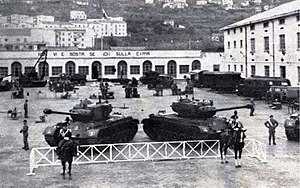 M26 Pershing. Next we have Panzerkampfwagen V, Ausf. G:  A gearbox oil cooler was installed. 3 mm armored ammunition bins11 were installed. Side plates were one piece and sloped8. Driver's vision port was removed11 and replaced by a rotating periscope.10 The driver's and hull gunner's hatches were hinged, as opposed to pivoting as in earlier models.10 The driver's seat was raised and the controls extended so that he could drive with head outside of hatch. The sides were sloped more to allow for more inside space.10 Also, parts of the fuel area were removed.10 The exhaust pipes were welded together from armor plates.10 The engine deck had better air intake and a raised housing for the left ventilator.10 Entered service in February 1944.8 Demag joined in building the PzKpfw Ausf G.8 Late models had all steel road wheels that produced by Deutsche Eisenwerke. Late production vehicles had the gun cleaning equipment moved from the tube on the side of the hull to the rear across the engine compartment. The AP round was 15 lbs and had a muzzle velocity of 3,066'/sec.6 Starting in September 1944/mid-194410 some of the turrets had a new mantlet in which the curve underneath was eliminated10. This was to help prevent downward deflection through the hull roof.10 Starting in October 1944 the fighting compartment had a heater system installed that would draw warm air from a device fitted over the left engine fan. Flame trap exhaust mufflers were installed. 3,740 were produced during 1944. Additional production information  Panzerkampfwagen V, Ausf. G. Next we have SU-100: 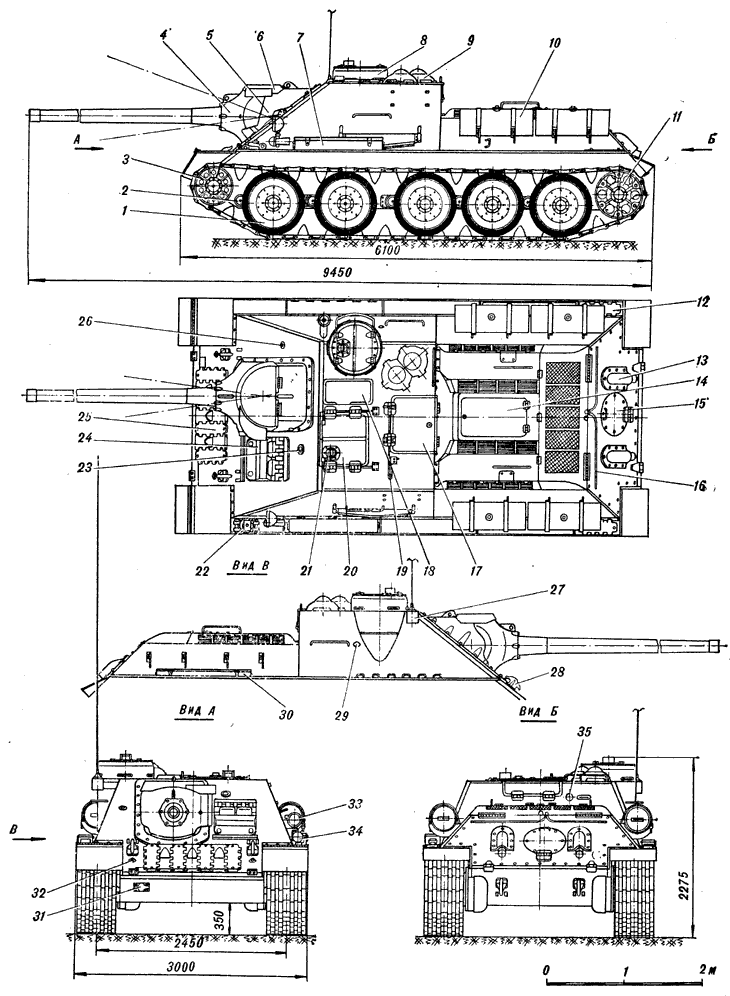 The SU-100 was a Soviet tank destroyer. It was used extensively during the last year of World War II and saw service for many years afterwards with the armies of Soviet allies around the world. It was developed in 1944 as an improvement to the SU-85, built on the same chassis as the T-34-85 tank. It was designed and built at the UZTM (Russian abbreviature 1059;1047;1058;1052; for 1059;1088;1072;1083;1100;1089;1082;1080;1081; 1047;1072;1074;1086;1076; 1058;1103;1078;1077;1083;1086;1075;1086; 1052;1072;1096;1080;1085;1086;1089;1090;1088;1086; 1077;1085;1080;1103; - Ural Heavy Machinery Factory, also called Uralmash) in Yekaterinburg. The SU-100 quickly proved itself to be among the best self-propelled anti-tank guns of World War II, able to penetrate 125 mm (4.9 in) of vertical armor from a range of 2,000 m (1.2 mi) and the sloped 85 mm (3.3 in) front armor of the German Panther from 1,500 m (0.93 mi).[citation needed] This was quite capable of defeating any German tank in service with the exception of the King Tiger, for which Soviet soldiers gave it the obscene nickname "Pizdets vsemu" ("**********ing end to anything").  SU-100. That concludes our trip, thanks for coming along for the ride, I hope you enjoyed this post. Credits and acknowledgements will now follow, and so they should: http://jaredfrederick.blogspot.com/2...ick-armor.html http://www.websters-online-dictionar...&sa=Search#906 http://en.wikipedia.org/wiki/M4_Sherman http://ebooks.riderdownload.com/ww2-tanks/ http://en.wikipedia.org/wiki/A7V http://en.wikipedia.org/wiki/T-34 http://en.wikipedia.org/wiki/Iosif_Stalin_tank#IS-2 http://en.wikipedia.org/wiki/Elefant http://en.wikipedia.org/wiki/Jagdpanther http://en.wikipedia.org/wiki/Panzer_VIII_Maus http://www.the-blueprints.com/blueprints/tanks/ http://www.wwiivehicles.com/germany/...w-v-ausf-g.asp http://en.wikipedia.org/wiki/SU-100 http://en.wikipedia.org/wiki/M26_Pershing http://forum.worldoftanks.com/index....nd-schematics/ Last edited by Feuer Frei!; 08-12-11 at 07:58 AM. |

|

|
 08-12-11, 07:50 AM
08-12-11, 07:50 AM
|
#3 |
|
Lucky Jack
 |
Been meaning to post these, so this be the place then.
 Churchill  Cromwell  Firefly  Hellcat 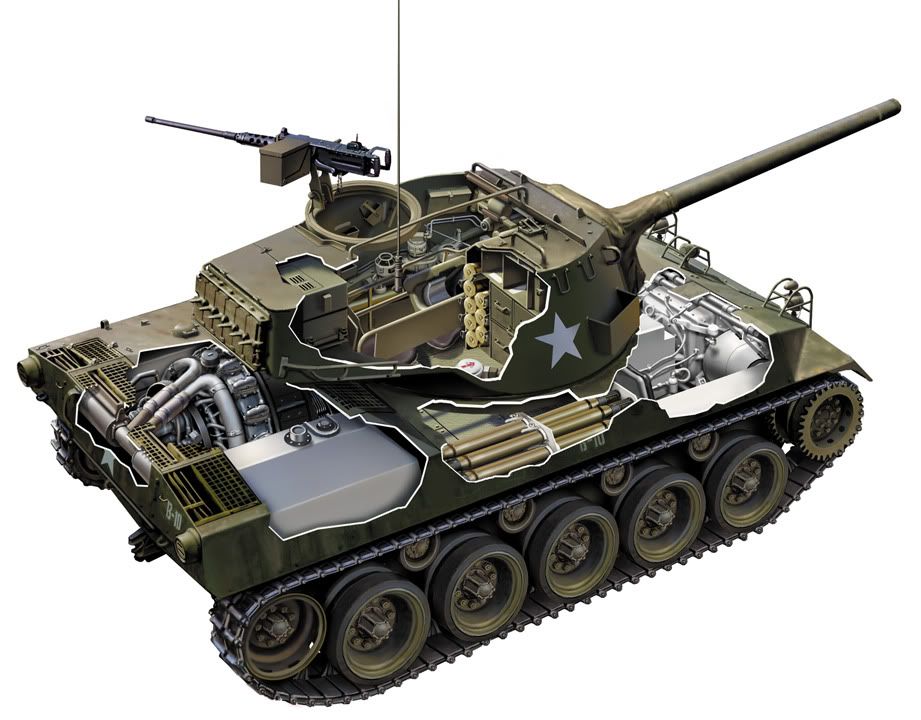 IS-2  KV-1 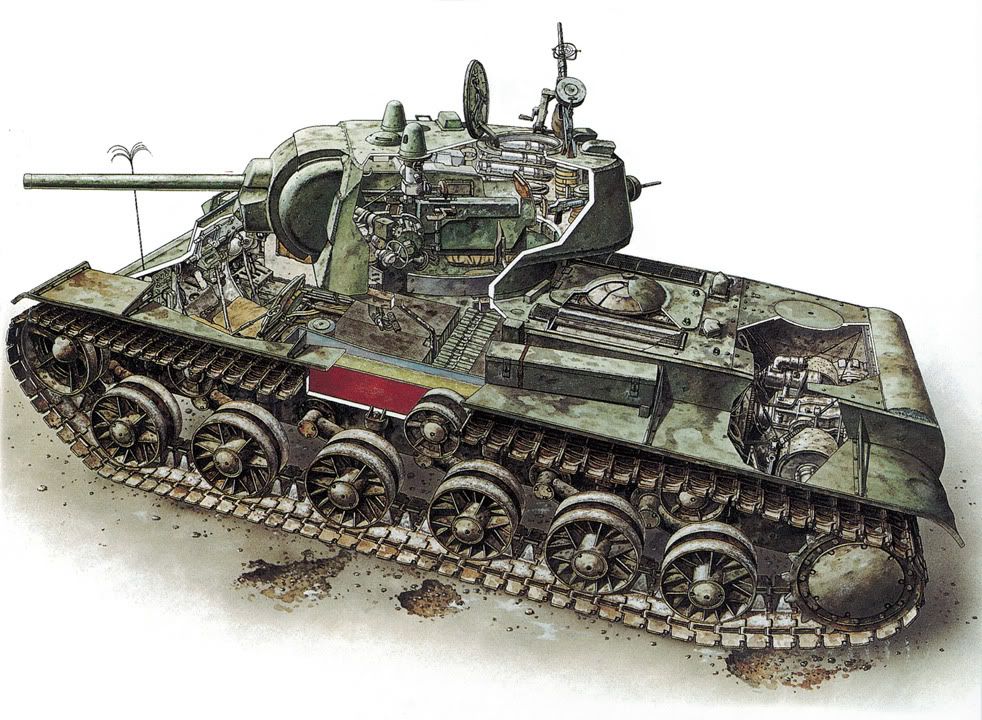 Matilda 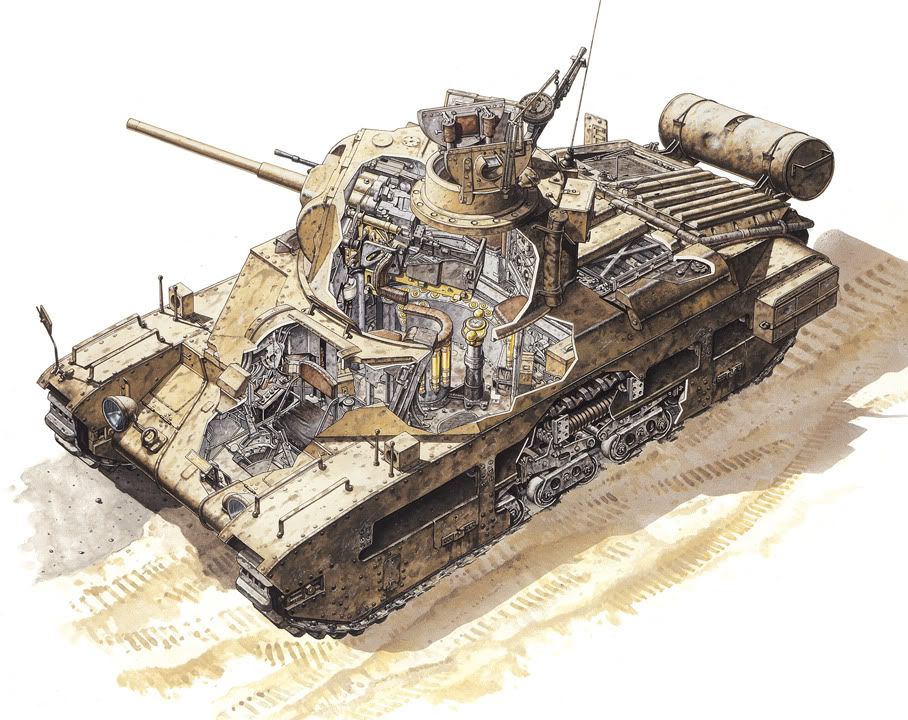 Panther  Pershing 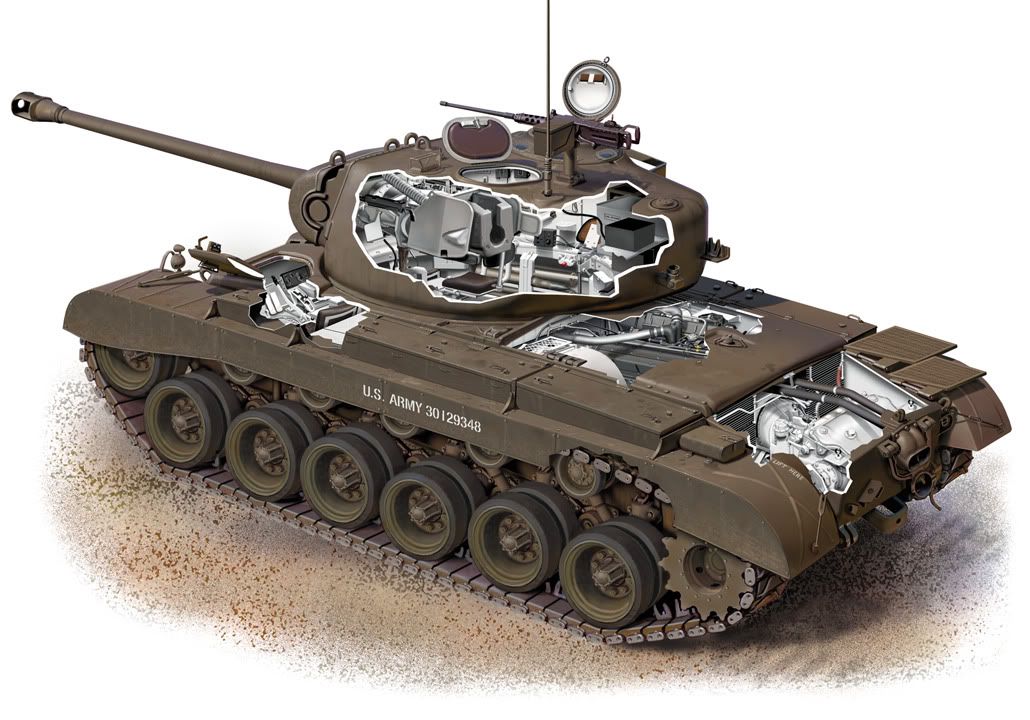 Panzer II  Panzer III 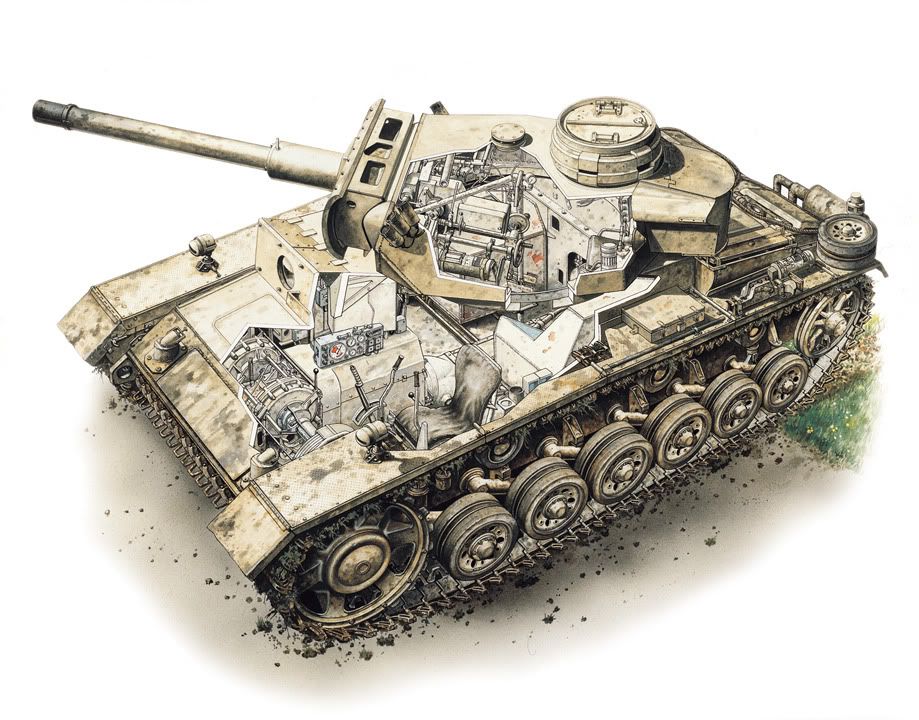 Panzer IV 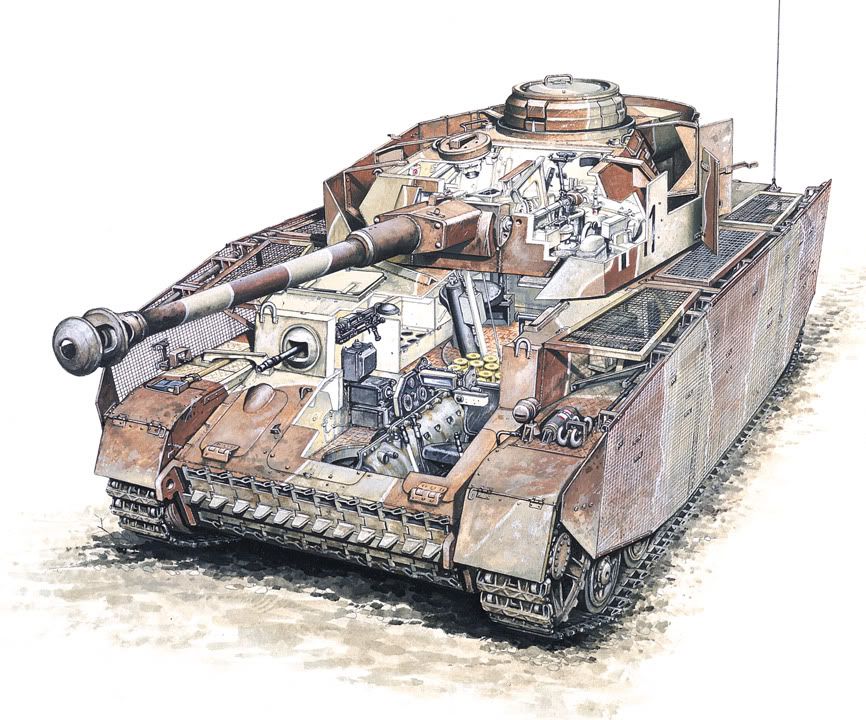 Sherman 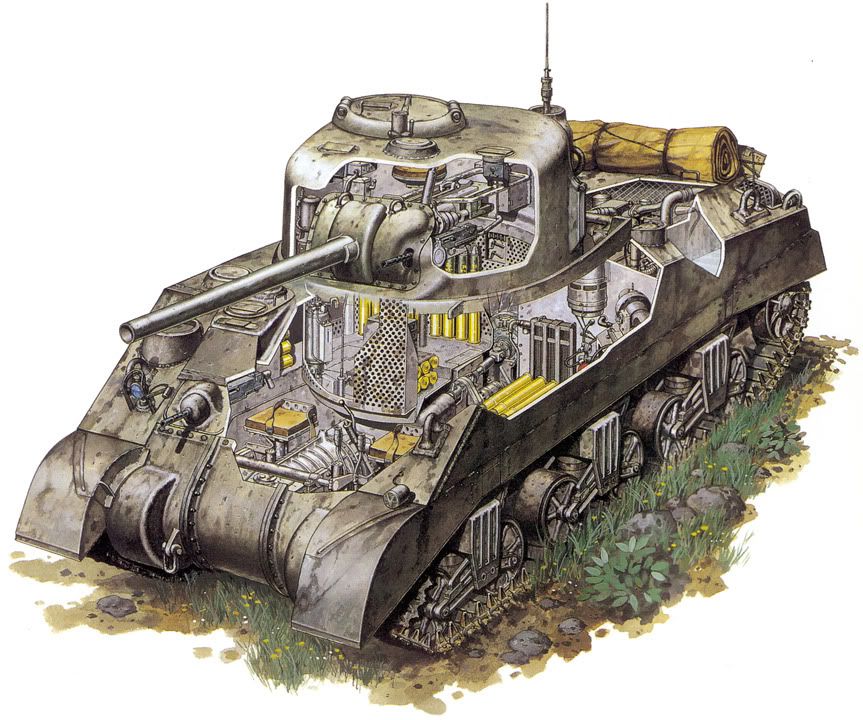 Stuart  T-34 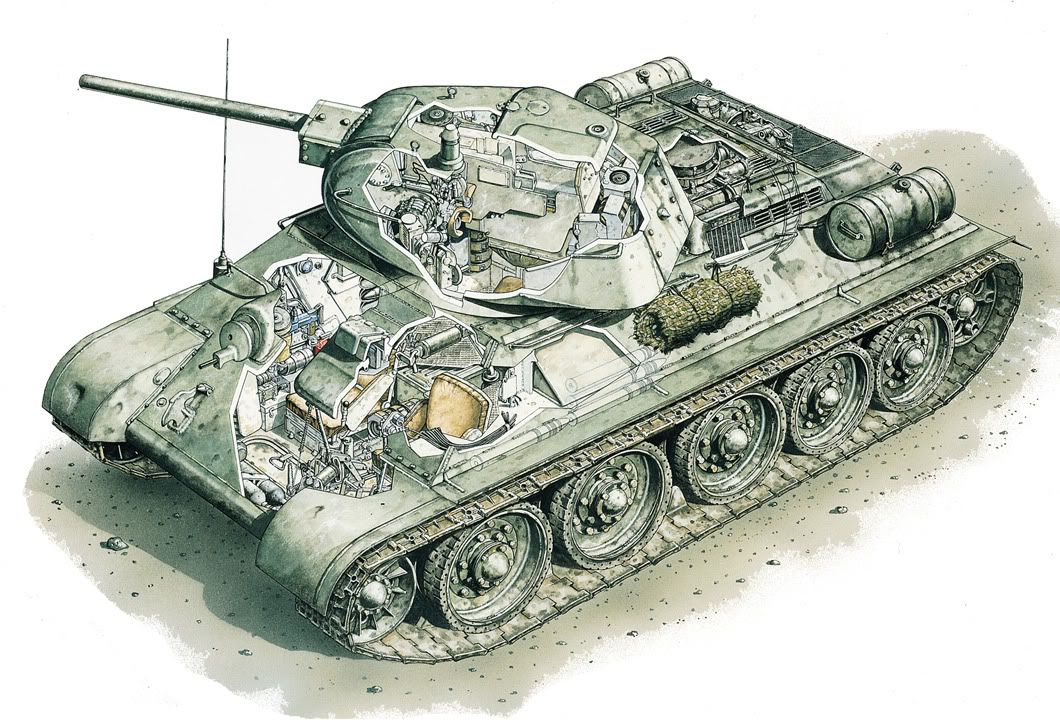 Tiger I 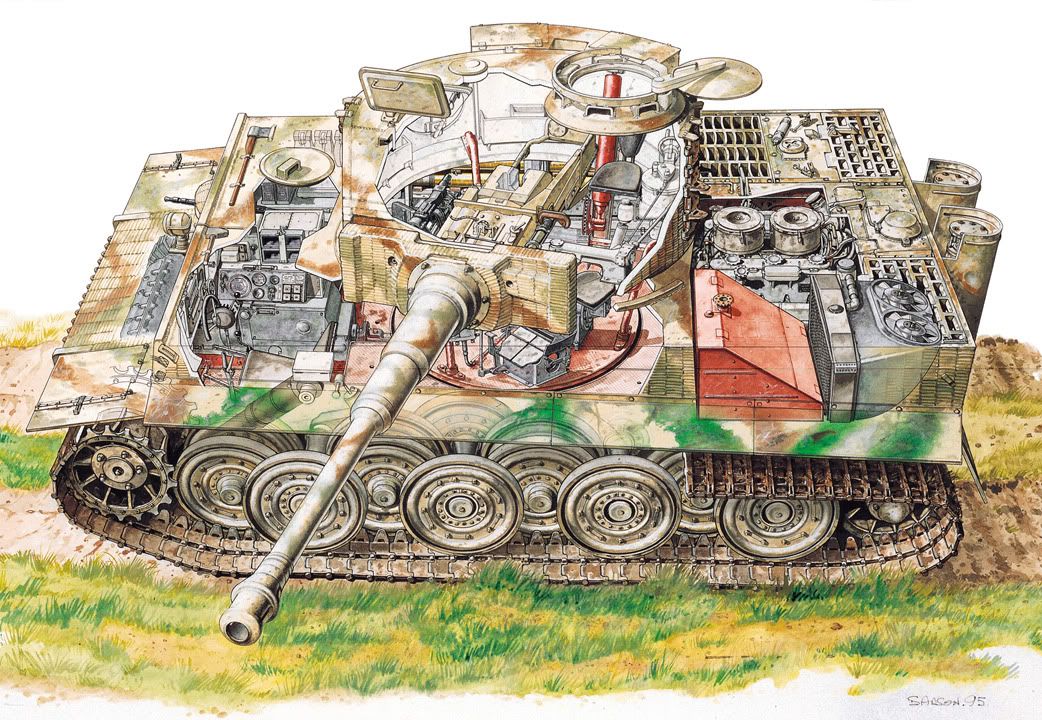 Tiger II 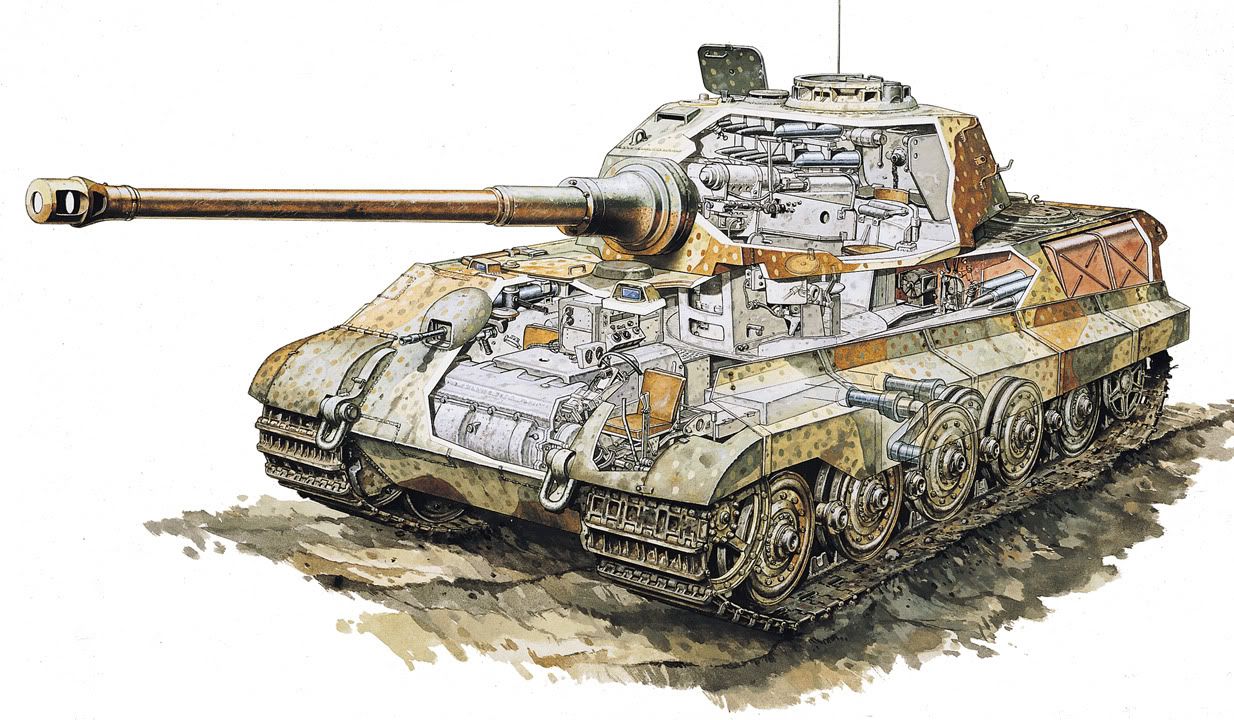 From: Panzer Corps |

|

|
 08-12-11, 07:55 AM
08-12-11, 07:55 AM
|
#4 |
|
Lucky Jack
 |
 Gotta love the old Mark Is...although I'm pretty sure most of their crews didn't.  Slow, unreliable, prone to getting stuck in the most unfortunate places. IIRC at the Battle of the Somme, out of the tanks that were sent out, only two I think actually attacked their targets, the others either got lost, got stuck, or attacked their own trenches. Slow, unreliable, prone to getting stuck in the most unfortunate places. IIRC at the Battle of the Somme, out of the tanks that were sent out, only two I think actually attacked their targets, the others either got lost, got stuck, or attacked their own trenches. The Mark V was the pinnacle of the design, although the International Tank, the Mark VIII 'Liberty' had some nice features, such as the compartmentalization of the engine from the rest of the crew, thus taking away some of the noise and fumes.  The Matilda was another lovely tank, often underrated because she was overtaken by technology, firepower and tactics, however during the Battle of France she was one of the most powerful tanks in the field. None of the German anti-tank guns could stop her, the shells just bounched off. Then they hit upon using the 88mm flak guns and that stopped the Matildas cold...but for a moment it looked possible that the British tanks could have cut through the German rear flank lines at Arras and make a gap in the German lines to allow the British forces to retreat and make another stand...although one could argue how effective such a stance would be when the British and French forces were being continuously out-fought in terms of armoured tactics. I do, of course, refer to the Mark II Matilda...the Mark I was...well...useless and should never really have gone into battle. This Matilda veteran puts it best: EDIT: Oh wow Dowly...those are getting the right click save as treatment 
|

|

|
 08-12-11, 07:58 AM
08-12-11, 07:58 AM
|
#5 |
|
Elite Spam Hunter
Join Date: Dec 2009
Location: Flensburg / Germany
Posts: 1,141
Downloads: 39
Uploads: 0
|
|

|

|
 08-12-11, 08:01 AM
08-12-11, 08:01 AM
|
#6 | |
|
Navy Seal
 Join Date: Sep 2009
Location: Valhalla
Posts: 5,295
Downloads: 141
Uploads: 17
|
Quote:

|
|

|

|
 08-12-11, 08:11 AM
08-12-11, 08:11 AM
|
#7 |
|
Lucky Jack
 |

|

|

|
 08-12-11, 08:12 AM
08-12-11, 08:12 AM
|
#8 |
|
Elite Spam Hunter
Join Date: Dec 2009
Location: Flensburg / Germany
Posts: 1,141
Downloads: 39
Uploads: 0
|
I've once done a jump like that during a night exercise. I was the driver then and with our night view (=Restlichtverstärker) you can't see anything close to you. So we just jumped down from a bunker's top which provides safety for the staff moving the targets on the shooting range...
...do not jump with the Leopard ten meters wide and two meters down, it hurts a lot   |

|

|
 08-12-11, 08:19 AM
08-12-11, 08:19 AM
|
#9 | |
|
Navy Seal
 Join Date: Sep 2009
Location: Valhalla
Posts: 5,295
Downloads: 141
Uploads: 17
|
Quote:
Out of curiosity, what sort of pressure or force could the tracks and suspension take? Before damage occurs? From a height, not shell damage. |
|

|

|
 08-12-11, 08:25 AM
08-12-11, 08:25 AM
|
#10 |
|
Elite Spam Hunter
Join Date: Dec 2009
Location: Flensburg / Germany
Posts: 1,141
Downloads: 39
Uploads: 0
|
That stunt was already 4 bumpers in the front

|

|

|
 08-12-11, 08:58 AM
08-12-11, 08:58 AM
|
#11 |
|
A long way from the sea
Join Date: May 2005
Location: Iowa
Posts: 1,913
Downloads: 21
Uploads: 0
|
Danasan - Leopard driver?
I remember seeing the guys at Ft. Knox jumping M1s on the live fire range while in Basc Training, as part of the vehicle familiarization training, just marvelling at the fact that they were getting 60-some-odd tons of armoured vehicle airborne... then we got to do it in Bradleys. No one really can understand just how much really inflexible bits of armoured vehicle there are to slam bits of you into until they've been there and done it. It's really remarkable, the places you find bruises afterwards.
__________________
At Fiddler’s Green, where seamen true When here they’ve done their duty The bowl of grog shall still renew And pledge to love and beauty. |

|

|
 08-12-11, 09:53 AM
08-12-11, 09:53 AM
|
#12 |
|
Elite Spam Hunter
Join Date: Dec 2009
Location: Flensburg / Germany
Posts: 1,141
Downloads: 39
Uploads: 0
|
Danasan - Leopard driver?
here is a bit of the story: http://www.subsim.com/radioroom/show...185157&page=32 here is a bit more: http://www.subsim.com/radioroom/show...143583&page=35 |

|

|
 08-12-11, 10:11 AM
08-12-11, 10:11 AM
|
#13 |
|
Silent Hunter
 Join Date: Jul 2002
Location: At periscope depth in Lake Geneva
Posts: 3,512
Downloads: 25
Uploads: 0
|
Awesome thread!
 Much more fun than what has been here lately. Much more fun than what has been here lately.  Been reading up on tanks again since getting Steel Fury last year. Mostly WWII obviously but modern stuff as well. @Danasan very cool stuff there. |

|

|
 08-12-11, 10:23 AM
08-12-11, 10:23 AM
|
#14 | |
|
A long way from the sea
Join Date: May 2005
Location: Iowa
Posts: 1,913
Downloads: 21
Uploads: 0
|
Quote:
__________________
At Fiddler’s Green, where seamen true When here they’ve done their duty The bowl of grog shall still renew And pledge to love and beauty. |
|

|

|
 08-12-11, 10:44 AM
08-12-11, 10:44 AM
|
#15 |
|
Elite Spam Hunter
Join Date: Dec 2009
Location: Flensburg / Germany
Posts: 1,141
Downloads: 39
Uploads: 0
|
 Here is the Leopard I engine without cooling / gearbox. 37,4 Liter V10, Turbodiesel 830PS Full weight with cooling / gearbox is 4.300 kg 
|

|

|
 |
|
|
